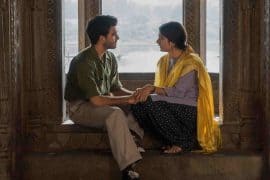The African country of Sudan is wrapped up in the ongoing political turmoil and civil war. While there has been a perpetual silence by the international community on the Sudan issue, recently the blue wave hit social media where people changed their profile pictures to blue to show support for Sudanese people. However, the whole picture has more to it having deeper intricacies.
- How did all of this start?
Sudan gained independence in 1956, having a vast diversity of about 600 ethnic groups and over 400 languages. The northern part of Sudan is predominately Muslim, while the southern regions are mostly Christian and Animist. The ethnic divide led to two civil wars between North and South Sudan.
However, to end the first civil war, peace was worked out with the Addis Ababa Agreement of 1972 giving greater autonomy to the southern provinces. But peace was short-lived.
A second civil war ensued after Sudanese President Jaafar Numeiri came to power and abolished South Sudan’s autonomy and imposed Sharia law throughout the country.
The war intensified as Omar al-Bashir took over as President of Sudan in 1989, after he led a coup that ousted the previous government. His tyrannous regime of 30 years saw deaths of several Sudanese civilians, ethnic cleansing against non-Arabs, collapse of the economy and instability in the nation-state. Later he was indicted by the International Court of Justice for genocide, war crimes and crimes against humanity.
- Tyrannous leader no longer in power; will that bring “Peace”?
Although the tyrannous leader was no longer in Sudan, ‘peace’ was a far-fetched dream for the country.
The civilians demanded an end to the military council led regime in the country and establish a civilian-led interim body and elections. The protestors wanted to pave way for the transition of power in the hands of the people through democratic elections. The military council and opposition groups originally agreed on a three-year transition to democracy, but talks soon broke down. Until 2011, Sudan was one country. That year, following decades of civil war, the southern section separated, becoming the world’s newest nation: South Sudan. Months after the country’s dictator Omar al-Bashir was ousted in a coup by the Sudanese military, a deadly power struggle has emerged between forces led by General Mohamed Hamdan Dagalo (Hemeti) and protesters calling for civilian rule, increased women’s rights, and an end to the brutal militias that have destroyed the African nation.
- The Blue Wave
The recent uprisings and violence followed by an internet shut down brought the world’s attention to the Sudan crisis. A military raid on a non-violent protest in Khartoum, the capital city, on 3rd June 2019 led to the death toll reaching more than 100. Social media became indispensable to propagate the plight of the Sudanese people to the world. Several posts showing the brutal protests started making rounds on social media. The world responded by using a blue profile picture to show solidarity with the Sudanese people.
Why blue? Well, it is reportedly said that it is an attempt to honour the memory of Mohamed Mattar, who died trying to protect two women during the bloody dispersal of the protest camp outside the military headquarters.
Interestingly, women are in the vanguard of the protests and voicing their opinions firmly. Having typically fled conflict zones, they are more vulnerable than most and have faced severe oppression. The protests are setting new discourses about women’s rights and giving them a new face in the protests.
The UN Peace-making Operations commented post the uprisings, “The crisis has produced one of the world’s worst displacement situations with immense suffering for civilians. A sustainable political resolution of the conflict is also the only avenue to chalk out a viable exit strategy.”
- Awareness or Pseudo Advertence?
Although awareness on the issue went viral on social media as people posted about it, there came up certain posts which claimed to help the conflict-affected people in Sudan and requested people to follow these accounts.
One such page which went viral on Instagram was @SudanMealProject which claimed to provide meals to starving Sudanese children on sharing its post. In less than a week, the account garnered more than 4,00,000 followers and was all over the social media. People posted and shared it without questioning its legitimacy in the misguided belief that it was an exchange for donation. Soon several similar accounts were made on social media claiming the same thing.
However, several people knew that it was a hoax, but shared it only for spreading awareness on the issue. Muda Tariq, a student of Lady Shri Ram college commented, “Many of my friends shared it despite knowing that it is a hoax, but it did generate awareness about the issue. However, blindly following these things makes it an exploitative process ends up trivializing the whole Sudan issue.”
Misrepresentation of intentions can be a host of misinformation. As well-informed citizens, we should question everything before actualising it. With the privilege of access to information, it’s the onus on the millennial generation to think and rethink before putting anything up on social media.
Sudan is battling through a huge political turmoil. Support, awareness through proper channels, and severe condemnation for such grievous violation human rights should be our role as responsible global citizens.
Feature Image Credits: Getty Images
Sriya Rane





Comments are closed.